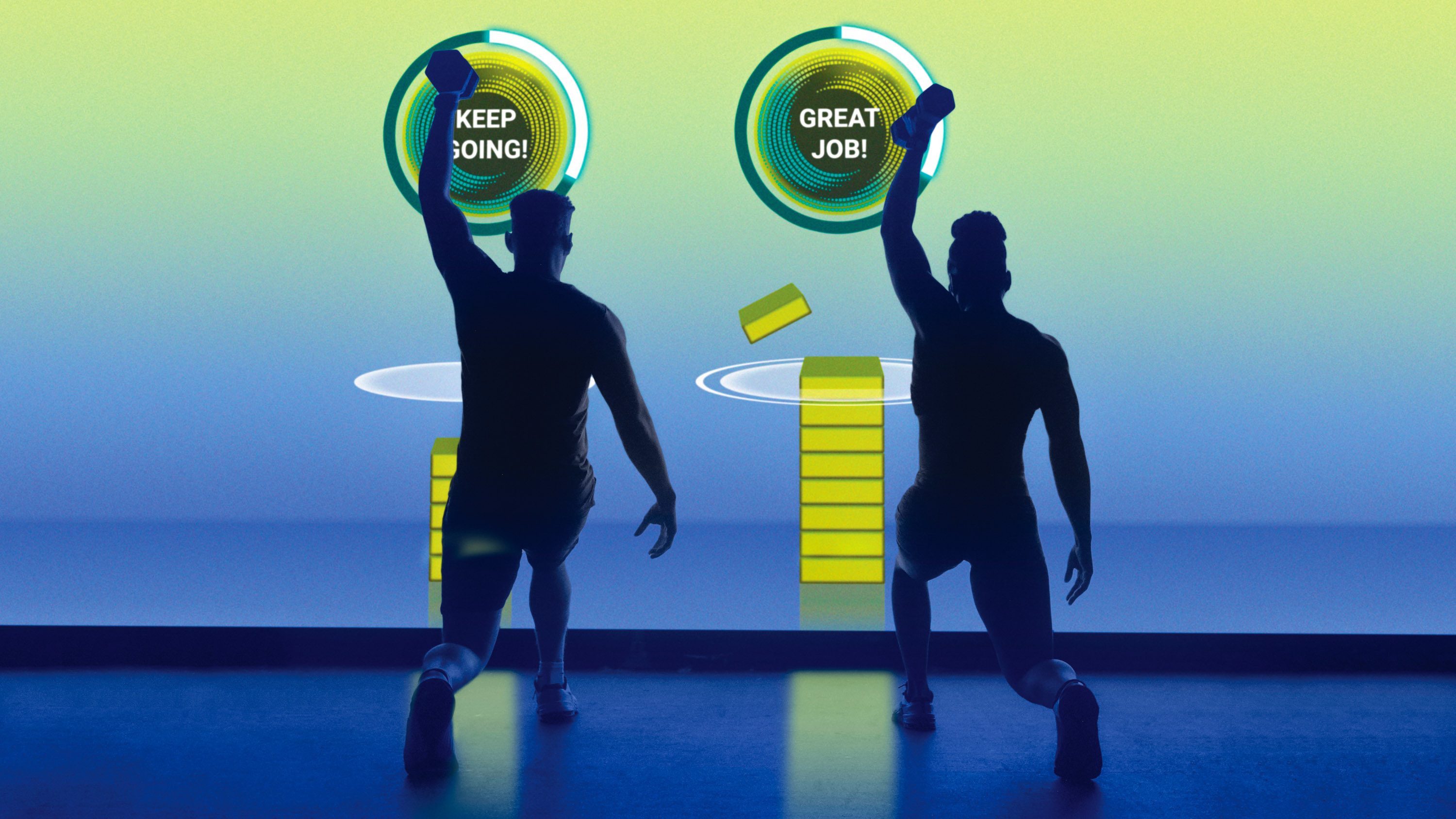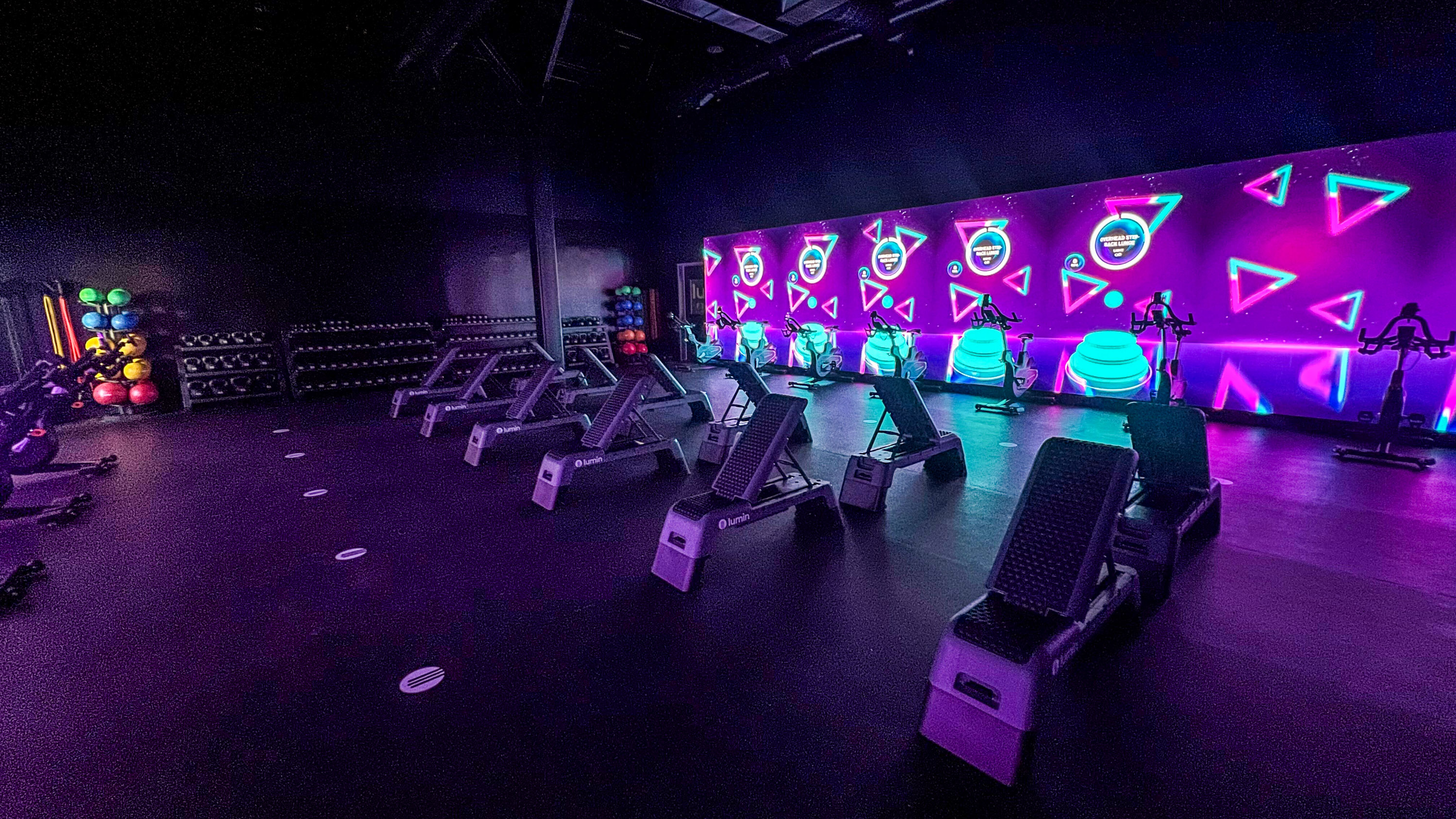Welcome to the AI gym staffed by virtual trainers
Wall-to-wall LED screens, algorithms, and motion tracking sensors allow Lumin Fitness to offer supervised workouts with no human interaction.

Like any good gym, Lumin Fitness prides itself on the quality of its trainers. Chloe, an energetic young coach, promises to help you crush your fitness goals. The disciplined Rex, who has the air of a drill sergeant, encourages his clients to strive for excellence, but he is quick to warn that there won’t be any shortcuts. If you’re after a more mellow approach, Emma and Ethan are warm and quietly confident.
But Lumin Fitness is no ordinary gym. These trainers don’t exist—at least not physically. They’re virtual AI coaches, designed to guide gym goers through vigorous workouts on the tall LED screens that line the walls of the company’s first studio, which opened last month in Las Colinas, Texas. Although AI is becoming more widespread within fitness, it’s generally used in products such as smart mirrors, training apps, and smart cameras. Lumin Fitness’s founders claim it’s the first gym of its kind to integrate AI so fully into a studio.
They are also confident their system of AI trainers will encourage people to start working out even if they were previously put off gyms. The idea is to offer a more personalized approach to fitness that cuts out interactions with expert human trainers who could leave them feeling intimidated or unmotivated.
The darkened studio space can accommodate up to 14 people at once, either completing a solo workout program or participating in a high-intensity functional training class where a group performs movements such as squats, dumbbell presses, and sit-ups.
Each member works out within a designated station facing wall-to-wall LED screens. These tall screens mask sensors that track both the motions of the exerciser and the gym’s specially built equipment, including dumbbells, medicine balls, and skipping ropes, using a combination of algorithms and machine-learning models.
Once members arrive for a workout, they’re given the opportunity to pick their AI coach through the gym’s smartphone app. The choice depends on whether they feel more motivated by a male or female voice and a stricter, more cheerful, or laid-back demeanor, although they can switch their coach at any point. The trainers’ audio advice is delivered over headphones and accompanied by the member’s choice of music, such as rock or country.

Although each class at the Las Colinas studio is currently observed by a fitness professional, that supervisor doesn’t need to be a trainer, says Brandon Bean, cofounder of Lumin Fitness. “We liken it to being more like an airline attendant than an actual coach,” he says. “You want someone there if something goes wrong, but the AI trainer is the one giving form feedback, doing the motivation, and explaining how to do the movements.”
During warmup and cool-down sections before and after workouts, the LED screens display a faceless humanoid figure completing the motions as a visual aid to help the client follow along. Once the workout has begun, the screens depict simple motivational games, encouraging participants to fill up a virtual basket of balls by completing a sit-up, for example, or building a virtual block tower every time they finish a burpee.
This gamified approach to fitness could prove motivating for some people, says Andy Lane, a professor of sport psychology at the University of Wolverhampton in the UK. “It’s about providing enough reinforcement to light up their dopamine receptors and bosh, the person wants to do it again,” he says. “If you game it to make people feel good about their achievements as they progress, that’s good.”
The sensors allow Lumin Fitness’s system to track the number of reps clients complete and ensure that they’re maintaining the correct form. If they arch their back when they’re supposed to be keeping their spine straight, for example, the system doesn’t count it as a completed movement until they do it correctly. This helps people get the full benefit from each exercise, and avoid injuring themselves in the process.
As members return to the gym, the system tracks their development over time through their use of the app. In the future, the company is planning to train the system to recognize when someone is finding the exercises too easy, enabling it to recommend heavier weights or different kinds of movements.
Olivia Lord, an assistant for the Texas Rangers baseball team, was one of the first people to put the AI coaches through their paces in a preview class several months ago, and she has been visiting regularly ever since. While she’s previously felt uncomfortable in gyms, she’s enjoyed having a motivational voice in her ear when she needs it the most.
“A gym for me is not a safe space. It’s really scary and not comfortable,” she says. “But this is very immersive and interactive. I’m able to see the work I’m putting in because of the gamification, and you don’t usually see that.”
While there will always be gym goers who will prefer interacting with human trainers, there is reason to believe that a lot of people wouldn’t mind being coached by AI systems, says Neil Cronin, a professor of exercise biology at the University of Jyväskylä, Finland, who studies how AI techniques can improve human movement analysis.
The recent rise of AI-powered therapy and companion bots show some people feel more comfortable interacting with machines than they might with fellow humans, he points out.
“I would personally be happy to take part in something like this, particularly to see the strength, or endurance, or whatever benefits I’d get from training,” he says. “I don’t think AI-based training would be inferior in this respect. On the contrary, if it can truly track my data over the long term and personalize a program for me, I may actually be better off using this approach.”
Deep Dive
Biotechnology and health
How scientists traced a mysterious covid case back to six toilets
When wastewater surveillance turns into a hunt for a single infected individual, the ethics get tricky.
An AI-driven “factory of drugs” claims to have hit a big milestone
Insilico is part of a wave of companies betting on AI as the "next amazing revolution" in biology
The quest to legitimize longevity medicine
Longevity clinics offer a mix of services that largely cater to the wealthy. Now there’s a push to establish their work as a credible medical field.
There is a new most expensive drug in the world. Price tag: $4.25 million
But will the latest gene therapy suffer the curse of the costliest drug?
Stay connected
Get the latest updates from
MIT Technology Review
Discover special offers, top stories, upcoming events, and more.